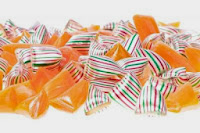This four-part article series provides an in-depth explanation of Temporomandibular Joint Disorders (TMD), looking at causes, symptoms, diagnosis and treatment.
Welcome back to our four-part article series on the causes, symptoms and treatment options for the disorders that affect the temporomandibular joint (TMJ), the articulating joint between the jawbone and temporal plate of the skull. In our previous article, the second installment of the series, an experienced dentist and orthodontist in Silver Spring MD described the various symptoms of TMD before explaining the various checks dental healthcare specialists do in order to diagnose the condition. In this article and the next, we shall take an in-depth look at the treatment options facing Silver Spring residents with TMD.
The Treatment Options for TMD
 “Treating TMD is far more complex than simply taking a course of prescribed medication,” explains a Silver Spring cosmetic dentist. “The kind of treatment we recommend also depends substantially on how severe a patient’s condition is. Usually, the best approach is to begin with conservative therapy, which should appease the symptoms. If the symptoms persist, surgery may ultimately be required.”
“Treating TMD is far more complex than simply taking a course of prescribed medication,” explains a Silver Spring cosmetic dentist. “The kind of treatment we recommend also depends substantially on how severe a patient’s condition is. Usually, the best approach is to begin with conservative therapy, which should appease the symptoms. If the symptoms persist, surgery may ultimately be required.”
In this article, an orthodontist will explain the non-surgical treatment approaches. In Part 4, the final installment of the series, we’ll look at the surgical options.
Basic Temporomandibular Disorder Treatment
Most Silver Spring cosmetic dentists agree that the best way to treat TMD is to begin with a combination of conservative therapies. The goal of these therapies is to reduce inflammation and swelling, alleviate pain and eliminate the source of stress or strain aggravating the TMJ.
 Adjust Your Diet: Refrain from eating hard, crunchy foods (hard candy, crisps, raw vegetables, ice, caramels) and foods that require you to stretch open your mouth to fit. Rather, stick to a softer diet (yogurt, soup, cooked vegetables, mashed potato, fish, etc.) for a few weeks or as recommended by your dentist. Cut smaller bites and chew gently. You’re trying to rest the TMJ and give the swelling and inflammation a chance to subside.
Adjust Your Diet: Refrain from eating hard, crunchy foods (hard candy, crisps, raw vegetables, ice, caramels) and foods that require you to stretch open your mouth to fit. Rather, stick to a softer diet (yogurt, soup, cooked vegetables, mashed potato, fish, etc.) for a few weeks or as recommended by your dentist. Cut smaller bites and chew gently. You’re trying to rest the TMJ and give the swelling and inflammation a chance to subside.
Heat and Cold Therapy: Apply an ice pack to your temple for approximately 10 minutes. Your orthodontist will show you how to perform some easy jaw stretching exercises, which you should subsequently do. After stretching, press a warm, moist towel to the same temple region for five minutes. Repeat this procedure two to three times a day.
Medication for the Symptoms: The orthodontist in Silver Spring may prescribe you some pain medications (for example, Aleve, Advil or Motrin) to help alleviate the discomfort and swelling associated with TMD. You may also be required to take muscle relaxants, especially if the cause behind your TMD is determined to be teeth grinding and jaw clenching.
Nighttime Night Guards and Splints: Wearing a mouth guard at night when you are more likely to grind and clench your teeth prevents the damage these bad habits have on the biting surfaces of the teeth, as well as lessening the stress it puts on the TMJ. A mouth guard or splint (which is worn all the time and not just at night) will also position the teeth correctly, eliminating the joint strain caused by a bad bite.
Resting the Jaw: “Simply resting the jaw joint by avoiding extreme movements, eating soft foods and keeping yawning to a minimum, you can give the TMJ a chance to heal, thus reducing pain and inflammation” explains the Silver Spring cosmetic dentist. “Other habits to avoid include resting your chin on your hand or cradling a telephone between your ear and neck. Bad posture can also exacerbate TMD. Sit up straight!”
Seek Treatment for Dental Problems: If a bad bite is to blame for your TMD, you may need to seek corrective dental treatment for crooked or missing teeth! Balancing the biting surfaces of your teeth will eliminate any strain on the TMJ caused by a bad bite.
Keep Your Mouth Slightly Parted: For as long as possible during the course of the day. This will reduce the pressure on the TMJ and prevent you from clenching or grinding your teeth.
Stay Tuned for Part 4
To find out what the Silver Spring cosmetic dentist has to say about what surgical treatment options are available for TMD, stay tuned for the final installment of this four-part article series!
No comments:
Post a Comment